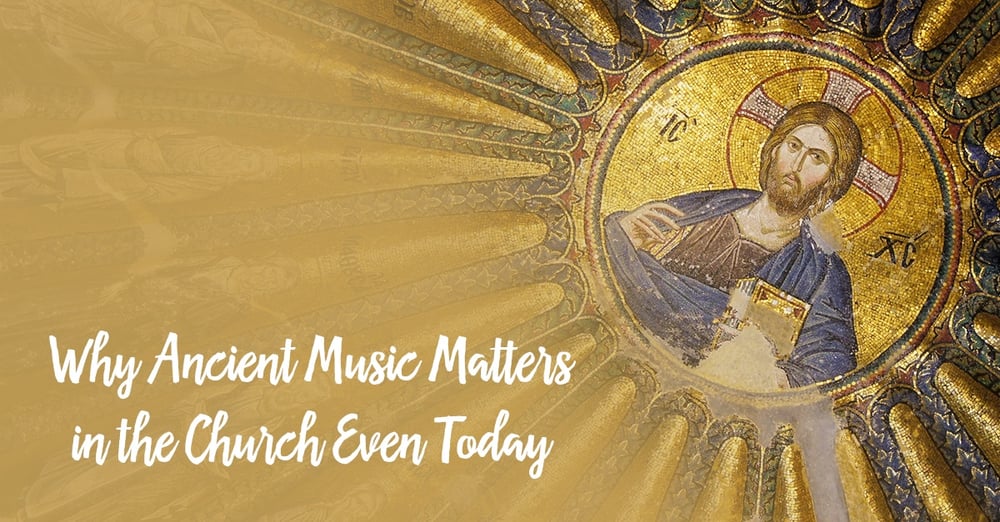A music history professor once painted this picture for me: “Imagine you are a commoner in the Middle Ages, slaving away in the fields every day. Now imagine you walk into church. When it is cold outside, the church is warm. When it is hot outside, the church is cool. Now imagine you come into church and hear this.” And she played for us a Gregorian chant.
The ancient chant plays an important role in church: its beauty affirms that this is a sacred place, a place set apart from the rest of the world. It tells the people who walk through the doors that they can find rest here. Take heart and be of good cheer for here you learn of heavenly things. Here you are forgiven and strengthened so that you are able to continue through your week with courage and hope. And here you will join in a communion that exists not just today but has existed through the ages and continues to thrive.
Ancient Music
New hymns and songs are written every year. Many of these are grand and glorious and beautiful. Many hymns and songs have been written in the last three centuries. These too are beautiful and worthy. Music of the Reformation era delights the ear as it thunders through our churches. Even Renaissance motets and polyphony provide a beautiful way to prepare our hearts and minds to reflect on God’s Word. The chants of the ancient Church, however, often evoke a unique kind of mystery and sacredness that simultaneously transport us to the beginnings of the Church and give us an aural picture of Christ’s work of redemption.
In fact, the oldest musical pieces of the Church, the Psalms, take us back before the birth of Christ. We still sing those same ancient words today, most often in chants. For the Psalms provide us with a rich, historical resource that assures us of the continuation not just of the formal Christian Church, but of all God’s community of saints. This is not old and irrelevant music. It is important to continue to sing these ancient songs in church today because they show that church is not like the rest of the world. Here you will find something different. Something hardy and persevering. Something real and grand and glorious. In the Church you find God’s unchanging Word and the forgiveness of sins in the sacraments.
Ancient Mystery
The story of redemption, from the fall to Christ’s birth, life, death, and resurrection, is often puzzling and mysterious. And it is here I think of an Easter Vigil service, perhaps my single favorite service at which to sing the ancient chants. At this service we hear how the prophecies of thousands of years have come true and the Son of God has died, He has overcome death, has harrowed hell, and has risen again. The events of that Holy Saturday are summed up in one of my favorite old chants, attributed to Wipo of Burgundy in the eleventh century:
Death and life have contended
In that combat stupendous:
The Prince of life, who died,
Reigns immortal. (LSB 460)
The music of this Gregorian chant beautifully contributes to the sense of mystery and ancient powers at work on that day.
If Satan is sometimes referred to as “the ancient foe,” then Christians must realize that we have ancient powers on our side as well. The Holy Trinity has existed eternally and has always and continues to contend against evil. The battle of good and evil is not simple and able to be boxed up nicely and tied with the bow of an easily logical explanation. No, it is terrifying and thunderous and ancient and mysterious. Therefore, let us use the ancient music handed down to us from the Church’s rich history as a way to say that our churches are not simple and sweet but rather are continuously engaged in a “combat stupendous” (LSB 460).
But fear not! For we know the ancient foe, the wily ancient serpent, has been beaten. For the ancient chants of the Church tell us that “Christ indeed from death is risen” (LSB 460)!
Preview a CPH Music piece with aspects of Gregorian chant.
In “When in Our Music God Is Glorified,” organ and trumpet shine with exciting fanfare-like writing. The choral part incorporates both the hymn melody and Gregorian chant.














.jpg?width=50&height=50&name=IMG_20220621_160541_456%20(1).jpg)
